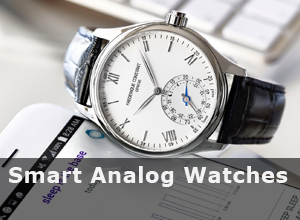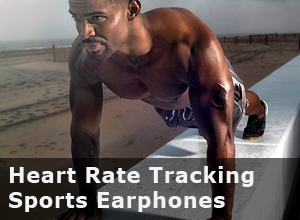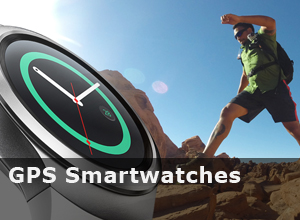Fitbit sell more fitness trackers than any other brand! When I talk to people who aren’t clued up at all about wearables, I find that quite a few of them say Fitbit is the only wearables brand they’ve heard of, excluding Apple, Samsung, Sony and the likes.
The Fitbit charge HR tops numerous “best fitness tracker for the money” lists, but it does have some stiff competition! The Basis Peak is a quality device owned by Intel who are looking to take a bite out of the wearables cherry. The Basis Peak comes with the tagline “The Ultimate Fitness and Sleep Tracker”.
So how do they compare?
Fitbit Charge HR vs Basis Peak
In The Box

The Fitbit Charge HR comes with a USB Bluetooth dongle so you can sync to your computer via Bluetooth. Also in the box is the world’s shortest USB charging cable, with an impressive total length of 27 cm.
The Basis Peak comes with a magnetic USB charger which clips onto the back of the watch base. I’m not the greatest fan of magnetic charging docks, the only advantage they have is they can stick to your fridge!

Fitbit

Basis
Looks
Fitbit are known for their minimal aesthetics. They keep their fitness tracker designs parallel with their functions. The Charge HR doesn’t look like much more than a rubber band on your wrist, until you turn the display on, then it comes to life a bit.
The White Basis Peak is the best looking fitness tracker I’ve tried. I also tried the black version but I didn’t like it as much. I am happy to wear the Basis Peak (white version) at any time of the day or night with casual gear.
There’s no doubt that the Basis Peak easily wins in the looks department!
Comfort
Another thing that Fitbit are known for is making comfortable fitness trackers. The Fitbit Flex is probably the most comfy I’ve ever tried, and the Charge HR is very similar in design. When you’re working out or sleeping, it’s easy enough to totally forget that you’re wearing it.

The Basis Peak has a watch design rather than a band, and it’s considerably larger than the Fitbit Charge HR. I’ve tried out numerous smartwatches, and the Basis Peak beats them all in the comfort department! The edges of the watch-base are curved to contour your wrist, and the silicone band is soft and feels good. Working out and sleeping with the Basis Peak are not a problem.
No clear winner in the comfort battle..
Design
The Fitbit Charge HR is made with flexible, durable elastomer. It feels good to the touch, unless you’re one of the few that’s allergic to the material. Unlike the Fitbit Flex which is a modular device, the Fitbit Charge HR is an all-in-one unit so you can’t change the strap. It comes in three sizes: small, large and extra-large for wrist sizes from 5.5 to 9.1 inches. It weighs 24 grams (small version), it’s 20mm in width, and 10 mm thick. It also has a decent quality watch-type stainless steel buckle.

The Basis Peak has solid build-quality. It has a soft silicone strap, and the base is made from lightweight aircraft-grade aluminum. It’s 11 mm thick and weighs a little under 54 grams. The strap is one-size-fits-all, unless you have abnormally sized wrists. The watch buckle is stainless steel and there are double free-loops as you can see in the picture. If you want to upgrade your strap, there’s a quick release leather strap available, and you can also pick up a limited edition Titanium version of the Basis Peak for about $100 more than the aluminium model.
The Basis Peak has a more robust build than any other fitness tracker I’ve tried, followed by the Fitbit Surge.
Display
The Fitbit Charge HR is equipped with an OLED display. Any official measurements have eluded me, but according to my tape measure the inner display is about 13mm by 5mm, in other words it’s pretty small.
The Fitbit Charge HR OLED display isn’t touchscreen, and it isn’t always-on. instead it has a single button on the side to activate it, and then each press will show you a different statistic. The display can also be activated by double tapping on the top of the band.
If you’re indoors, the Charge HR’s display looks very decent and bright. However, outdoors in the sunlight the display isn’t so clever and legibility is low.
The Basis Peak is equipped with a 1.26 inch, monochrome e-ink, touchscreen display. To add to the build-quality the dispay is protected by Gorilla Glass 3. The Basis Peak Display is always-on so you’ll never find yourself looking at a blank screen.
I’ve recently reviewed the Fitbit Surge and the Garmin Vivoactive, and the Basis Peak has a superior display! The touchscreen is very responsive, and with the Gorilla Glass 3 you can see and feel the difference in quality, plus the Gorilla Glass 3 is resistant to scratches.
Although the Basis Peak display is monochrome e-ink (black and white), it’s high contrast, looks great outdoors, and responds very well to sunlight. It also looks good indoors, and there’s a backlight for dark conditions. The backlight is activated by swiping upwards on the right of the screen, and deactivated by swiping back down, otherwise it times out after about 30 seconds.As there are no buttons on the Basis Peak everything is done via touchscreen, either by swiping or double tapping.
Basis Peak wins the display battle..
![]()
![]()
Fitness Tracking
The Fitbit Charge HR tracks heart rate, steps taken, calories burnt, distance travelled, floors climbed, active minutes, and displays the time. You’ll have to rely on the accuracy of the accelerometers to log the distance of your outdoor routes as the Charge HR doesn’t have a built-in GPS
The accuracy question frequently crops up, so I did some tests with the Charge HR’s distance readings vs the GPS readings on my smartphone. Firstly, accompanied by my four-legged friends, was my usual walk which according to the GPS on my Samsung Galaxy Ace 4 was 2.12 miles that day (GPS readings vary a fraction each time). The Fitbit Charge HR accelerometer clocked the walk at 2.18 miles, so it was pretty close
The second test involved running my usual route around my local park. The GPS clocked the route at 1.84 miles, and the Fitbit Charge HR accelerometer clocked the distance at 1.96 miles. It was pretty close, but it’s more accurate for walking than it is for running.
The Basis Peak tracks heart rate, steps taken, calories burned, skin temperature, and perspiration, surprisingly though, it doesn’t track distance covered. I usually measure the accuracy of my fitness tracker’s accelerometers by comparing their distance readings to GPS (for outdoors), or a treadmill (for indoors). So, because the Basis Peak doesn’t provide distance stats makes it hard to gauge the accuracy of the step counter.
Another fitness tracking feature The Basis lacks is elevation (floors climbed). It doesn’t make too much sense to me that Basis decided to leave out distance and elevation, especially distance as this is the stat that I find myself looking at the most! It does kind of make up for it with skin temperature and perspiration tracking, which the Charge HR doesn’t have, but in honesty I know when I’m hot and I know when I’m sweaty, but knowing how much distance I’ve covered in a day isn’t something my brain can calculate naturally!
A few more kudos are brought back to the Basis Peak’s corner because of its Body IQ feature. Body IQ uses gesture recognition to automatically determine when you start an activity, and activity type, as long as it’s running walking or cycling.
Although the Basis Peak has Body IQ, which is pretty cool, its lack of distance and elevation means the Fitbit Charge HR fitness tracking capabilities are more useful to me. Fitbit wins..
Sleep Tracking
The Fitbit Charge HR enters sleep mode automatically, and it works well. Sleep mode seems to kick in about 20 minutes after I drop off. The Charge HR’s sleep analysis is pretty basic, it doesn’t track light, deep and REM sleep, instead it just shows hours slept, periods of restfulness, and when you were awake.
You can set the Fitbit’s sleep tracking mode to “normal” or “sensitive”. The screenshots below show both different modes, and as you can see sensitive mode says I only slept for 2 h 19 mins between 00:49 and 09:37 which simply isn’t true as that was a great night’s sleep.

Normal

Sensitive
The Basis Peak enters sleep mode automatically, and is consistent with the times I nod off. It provides a much more in-depth sleep analysis than the Fitbit Charge HR. You get an overall sleep score, how many times you tossed and turned, number of sleep interruptions, total hours slept, and time of sleeping and waking.
The Basis Peak app shows a detailed graph of your night’s sleep, showing what times and how long you were in light sleep, deep sleep, and REM sleep. Below are two screenshots of the same night’s sleep, the first one is from my Android smartphone, the second from my PC.

Android

PC
Sleep tracking isn’t Fitbit’s strongest area, whereas the Basis Peak has transformed my opinion of sleep tracking from don’t really care to actually pretty interested! Basis Wins..
Heart Rate Monitor
The accuracy and stability of wrist worn optical HRM’s is a question that crops up a lot. Both the Fitbit Charge HR and Basis Peak are known to perform better than most. They both seem reasonably stable, and consistent with the rest my activity stats. If I had to say which one was more stable it would be the Fitbit Charge HR.
Sean, our resident crazy man who trains for triathlons and half marathons uses a Suunto set up – Ambit3 + Smart Belt chest strap. He has tested both the Fitbit Charge Hr and Basis Peak, the Garmin 225 and Mio Alpha 2 against his chest strap…….. “When I need to stay between 65% – 75% of maximum it’s very important that the HRM is accurate and stable. None of the wristbands you lent me are accurate enough to replace my strap.”
If you are very serious about your device maintaining the correct heart rate zone then an EKG chest strap is the way to go. The Fitbit Charge HR just about edges the HRM battle for me..
Smart Notifications
The Charge HR only shows incoming caller ID. It vibrates and a message scrolls across the screen to show you who’s calling.
The Basis Peak displays incoming caller ID, text, and email notifications. It will vibrate up to three times, depending on the notification type.
I’m a lot happier if I can get texts and emails on my wrist, so the Basis Peak wins!
Features and Customization
Neither wearables have a great deal of customization options. Both allow you to set unit types (lbs or KG, KMPH or MPH etc), turn notifications on or off, edit goals, change heart rate monitor settings, and a few more basic options.
The Fitbit Charge HR has a selection of 4 watch faces to choose from, which is 3 more than the Basis Peak.
Both wearables now have a vibrating alarm clock feature. The Charge HR alarm needs to set from within the app, whereas the Basis Peak’s can be set directly from your wrist.
No winner..
App
The Fitbit mobile app is compatible with iOS, Android, and Windows Phone. You can also access your dashboard on PC or Mac for a more in-depth analysis of your activity stats.
The app allows you to share fitness stats on Twitter, feed them to your wordpress blog, and Microsoft HealthVault. You can to connect to your friends on Facebook, and invite friends via email, and can tap into the Fitbit community to discuss and compete with other Fitbit users.
Fitbit interacts with third-party apps including: Endomodo, MyFitnessPal, MapMyRun, WeightWatchers, and Fitbit have recently teamed up with Strava for two-way integration.
![]()

The Basis Peak app is compatible with iOS and Android, and you can access your dashboard on PC or Mac for a more in-depth analysis of your stats. The Basis Peak app is not the most feature packed app in the world, but it’s easy to navigate, and what it does, it does well. Like other fitness apps, it provides you with history, goals, activity data, and insights.
You can hook the Basis Peak up to Google Fit and Apple Health, plus stream heart rate data to third-party apps such as Strava. There’s a section of the Basis app called “Playground” where there’s a feature called “Location Report”, a method of coarse tracking which derives your (mobile’s) location from cellphone towers/WiFi, and roughly maps out the area where you’ve been active. Also with Playground is a feature called “Photo Finish” which prompts you to take a selfie after exercising for 20 minutes or more, it then curates a selfie image gallery so you can see changes over time.
The sleep tracking section of the Basis app is excellent, and I like the way the activity screen is laid out with a graph that shows a different color for each biometric.
![]()

Location Report
There are things I like about the Basis app, it’s not over complicated and has better sleep reports, but overall the Fitbit app does more.
Battery Life
I’m getting 4-5 days out of the Fitbit Charge HR battery. It takes about 90 minutes to charge.
The Basis Peak is also giving me 4-5 days. It takes closer to 2 hours to charge.
Water Resistant
The Fitbit Charge HR has a water-resistant rating of 1 ATM (10 meters), but it shouldn’t be used for swimming and showering isn’t recommended.
The Basis Peak has a water-resistant rating of 5 ATM (50 meters). Although it doesn’t have a dedicated swimming mode, it’s safe to use in the pool.
Verdict
To choose between these two wearables is quite a tough decision! If distance and elevation tracking are your thing, then the Fitbit is the winner. But, if sleep tracking is your thing then the Basis wins.
The Fitbit has a more feature rich app, and is $40 or so cheaper. The Basis is a better looking wearable with a touchscreen and it delivers emails to my wrist.
OK, it’s a tough one but for me the Fitbit is the winner, simply because it tracks my distance, and that is the stat that I look at the most!
Price
• Fitbit Charge HR
Around $149 USD
• Basis Peak
Around $199 USD
Like This Article? Why Not Try…
Fitbit Charge HR vs Jawbone UP3
Garmin Vivoactive vs Fitbit Surge
Fitbit Charge HR vs Garmin Vivosmart HR



























You said the Basis Peak doesn’t track distance but in the picture just above it shows 6,790 steps! I’m a bit confused here!
Ian E. The Basis Peak will give you a step count reading, but not a distance reading in miles or kilometers like the Fitbit Charge HR.
Nice Post, very helpful reviews. I am not much familiar with these wearable gadgets but my son always keeps telling me that I should buy a fitness tracker for me.
Ken. Thanks for the comment! The new generation of fitness trackers cater for everyone, not just die hard fitness folks. They’re easy to set up and use, and they give you info about your daily activities that you would not know about otherwise. It always interests me to see how far I’ve walked in a day.
I found your review very helpful as I am currently trying to decide between the two. You mentioned the apps that the FitBit interacts with but did not do the same for the Peak. Is there a reason for this? I’ve been trying to find information on which apps the Peak connects with but have yet to find a list anywhere.
Azin. The Basis Peak streams heart rate data to all iOS apps which support Bluetooth LE standard heart rate profile (GATT). These apps include Strava, RunKeeper, Endomondo and MapMyRun. The number of compatible third-party Android apps are currently more limited due to GATT protocol incompatibility, although this is likely to improve over time. Also, it syncs with Google Fit so you can share biometric data (sleep, steps, calories etc) with other Google Fit connected apps.
You also didnt mention that unlike the fitbit the basis peak band can be interchanged different colors to choose from.
The only reason I’m comparing these devices is the Heart Rate Monitoring – As you mentioned yourself, they are the leading devices in that field but you just skipped over that comparison, such an oversight!
just wish either one includes fall detection and alert family option. will be ideal for my parent..